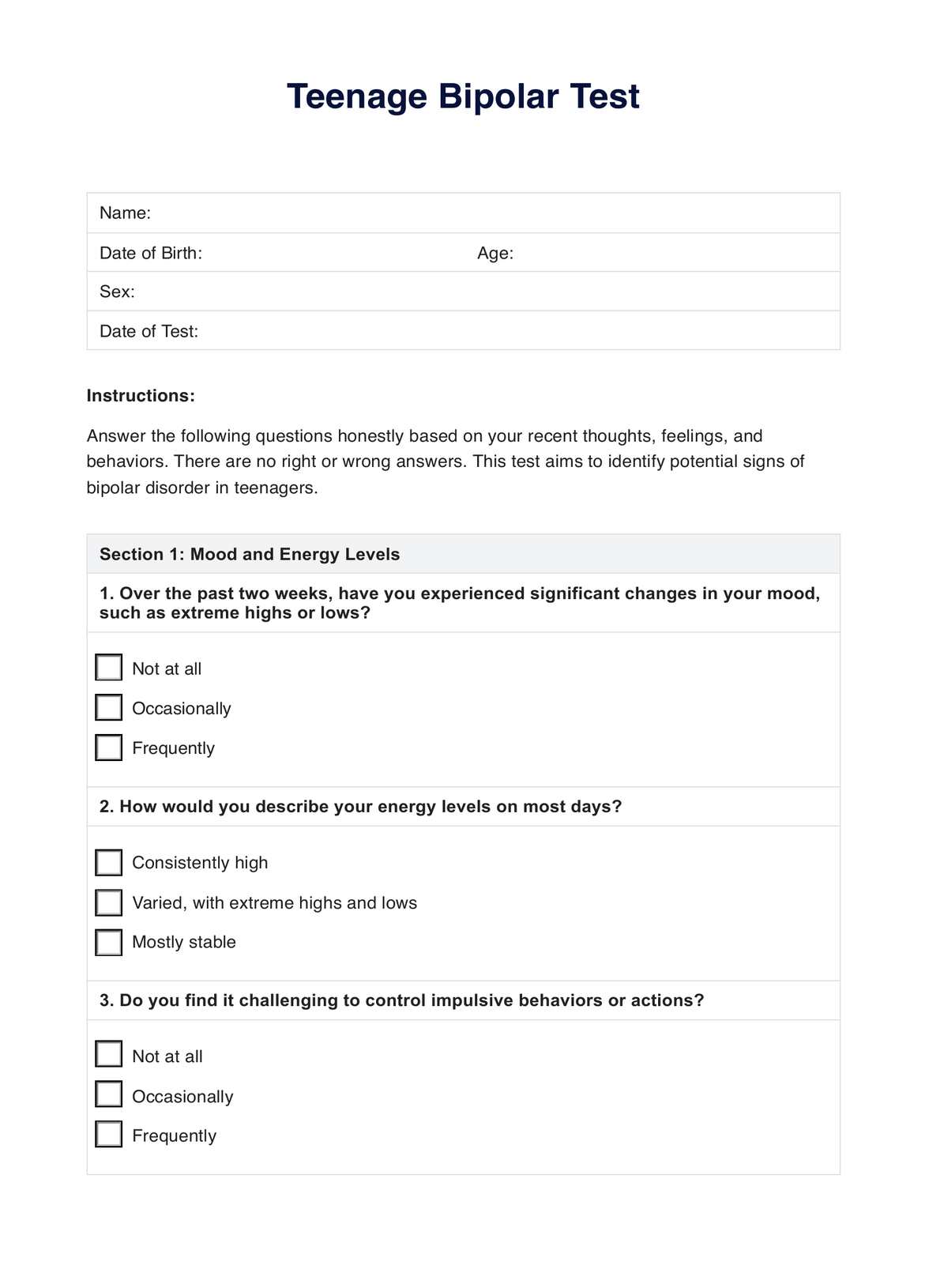Untreated bipolar disorder can lead to severe mood swings, impacting daily life, relationships, and overall functioning. Individuals may experience prolonged periods of depression, followed by episodes of heightened energy and impulsivity during manic phases, significantly disrupting their well-being and quality of life.

Teenage Bipolar Test
The teenage bipolar test is a crucial tool for identifying potential mood disorder symptoms in adolescents. Download Carepatron's free PDF example to learn how to administer and interpret the test.
Teenage Bipolar Test Template
Commonly asked questions
The first red flag of bipolar disorder is often noticeable changes in mood and behavior. Individuals may exhibit extreme highs (manic episodes) or lows (depressive episodes), with symptoms like impulsivity, increased energy, irritability, or persistent sadness, signaling the potential presence of bipolar disorder.
Bipolar disorder can manifest at any age, but it often emerges in late adolescence or early adulthood. However, it's essential to note that the onset of bipolar disorder can occur in childhood or later in life, emphasizing the importance of recognizing symptoms across the lifespan.
EHR and practice management software
Get started for free
*No credit card required
Free
$0/usd
Unlimited clients
Telehealth
1GB of storage
Client portal text
Automated billing and online payments











